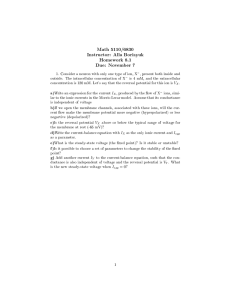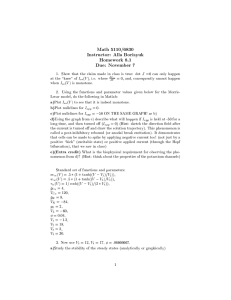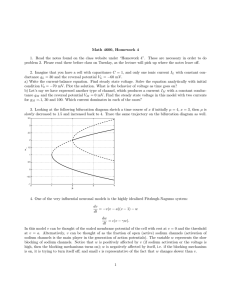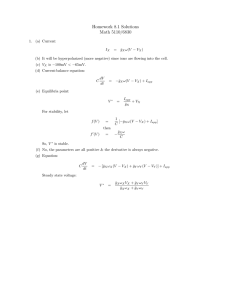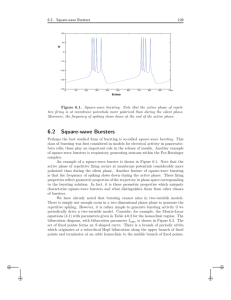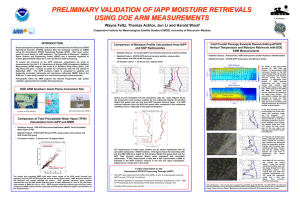6780, Spring 2008 Homework 1. Due February 14.
advertisement
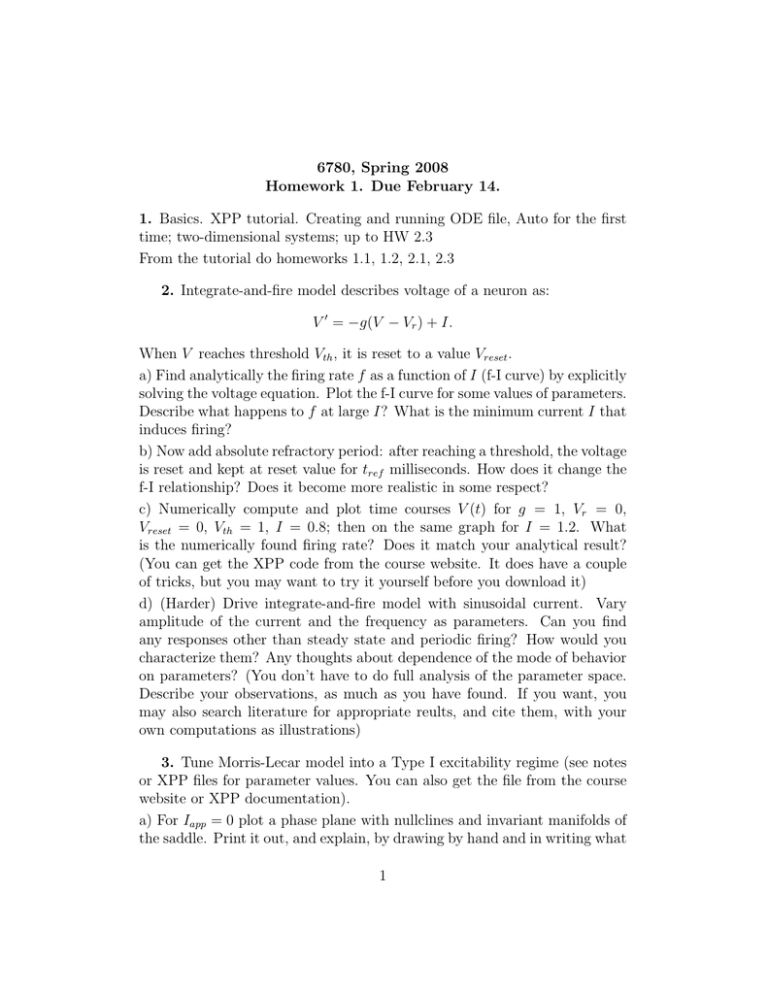
6780, Spring 2008 Homework 1. Due February 14. 1. Basics. XPP tutorial. Creating and running ODE file, Auto for the first time; two-dimensional systems; up to HW 2.3 From the tutorial do homeworks 1.1, 1.2, 2.1, 2.3 2. Integrate-and-fire model describes voltage of a neuron as: V 0 = −g(V − Vr ) + I. When V reaches threshold Vth , it is reset to a value Vreset . a) Find analytically the firing rate f as a function of I (f-I curve) by explicitly solving the voltage equation. Plot the f-I curve for some values of parameters. Describe what happens to f at large I? What is the minimum current I that induces firing? b) Now add absolute refractory period: after reaching a threshold, the voltage is reset and kept at reset value for tref milliseconds. How does it change the f-I relationship? Does it become more realistic in some respect? c) Numerically compute and plot time courses V (t) for g = 1, Vr = 0, Vreset = 0, Vth = 1, I = 0.8; then on the same graph for I = 1.2. What is the numerically found firing rate? Does it match your analytical result? (You can get the XPP code from the course website. It does have a couple of tricks, but you may want to try it yourself before you download it) d) (Harder) Drive integrate-and-fire model with sinusoidal current. Vary amplitude of the current and the frequency as parameters. Can you find any responses other than steady state and periodic firing? How would you characterize them? Any thoughts about dependence of the mode of behavior on parameters? (You don’t have to do full analysis of the parameter space. Describe your observations, as much as you have found. If you want, you may also search literature for appropriate reults, and cite them, with your own computations as illustrations) 3. Tune Morris-Lecar model into a Type I excitability regime (see notes or XPP files for parameter values. You can also get the file from the course website or XPP documentation). a) For Iapp = 0 plot a phase plane with nullclines and invariant manifolds of the saddle. Print it out, and explain, by drawing by hand and in writing what 1 happens when the voltage is perturbed from rest below or above threshold. What is the threshold in this case? b) Make a bifurcation diagram with Iapp as parameter. Include steady state curve and families of periodics. c) Set Iapp just above the homoclinic bifurcation. Look at the voltage trajectory in the phase plane and vs. time. What is the period? Where does voltage spend most of its time? Why? d) Make current Iapp a function of time: Iapp = I0 + I1 sin(ωt) in such a way that the smallest value is in the region of stable oscillations and the largest value is where nerve block is the only attractor. Let the voltage vary with the appropriate rate ω to see the bistability. At what Iapp , approximately, does the oscillation cease? At what current do you see it appear again? How does this change if you move Iapp very fast or very slowly? Explain how your results match what you expect from the bifurcation diagram you computed above? 4. Version 1. Implement a Chay-Keizer model of square-wave bursting (see notes around figure 16). a) Tune it into a bursting regime. Plot time courses of Ca, ICa , IK−Ca and voltage during a burst. Explain why bursting happens, biophysically, by observing the behavior of different currents. Overlay the voltage time course on top of z − V bifurcation diagram (as in Fig. 16), and explain why the burst happens, mathematically. b) Introduce removal rate of Ca2+ from the cytoplasm, k, as Ċa = (−µ · gCa m∞ (V )(V − VCa ) − kCa). Vary parameter k to observe how it changes the behavior of the model. Why does it make sense biophysicaly (look at the behavior of different currents in this case)? How the transitions happen mathematically? (what happened to the bifurcation diagram)? During a continiously spiking mode, what is the role of IK−Ca ? Version 2. Find a model with bursting, different from what we considered in class. Implememnt the model. Explain (with suitable graphs) what is the mechanism for bursting in this model both biophysically (what currents turn on and off and why) and mathematically (e.g. bifurcation diagram). Can you make any testable predictions (repeating the same one as there was in the paper in your own words is fine)? 2
